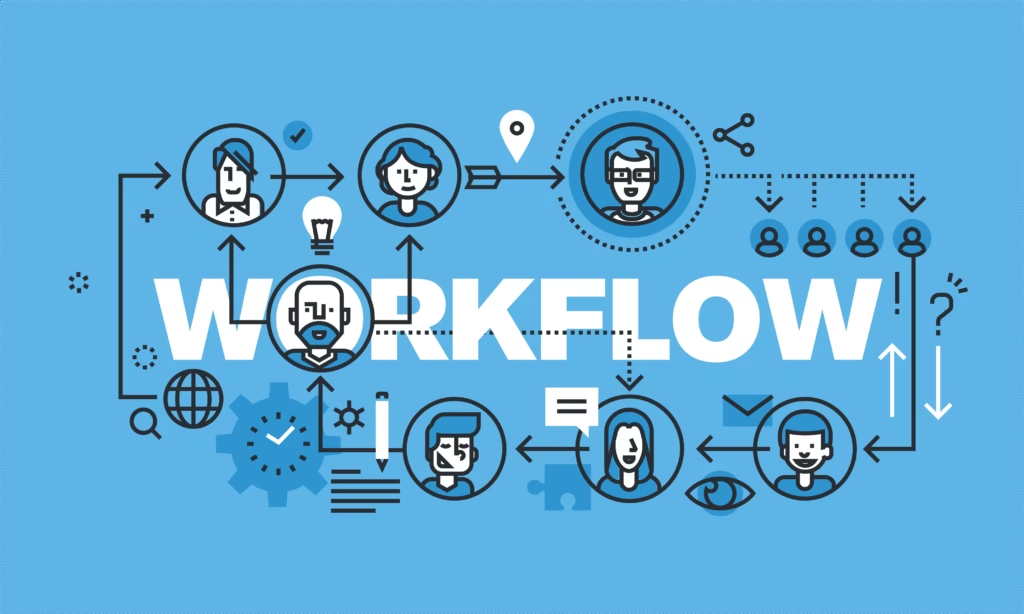Workflows rarely fail because people aren’t capable — they fail because the systems behind them were never intentionally designed. Productivity collapses when routines evolve through improvisation rather than strategy. To build workflows that actually accelerate output, you must understand what causes them to break — and how to rebuild them with clarity and purpose.
Inherited Processes: The Silent Productivity Killer
Most workflows aren’t designed — they’re inherited. People repeat steps without questioning them, even when those steps no longer serve the business. Over time, these outdated habits create friction and slow everything down.
As Christie Lindstrom, Chief Marketing Officer at iGrafx, explains, “Organizations often carry outdated processes simply because ‘it’s how we’ve always done it.’ Real efficiency begins when you step back and question every step.” A workflow audit often reveals that unnecessary steps, legacy habits, and outdated structures are doing more harm than good.
Friction Lives in the Gaps — Not the Tasks
Many assume workflows fail because tasks take too long. In reality, the real bottlenecks live between tasks: delays, handoffs, missing context, and unclear ownership. These micro-frictions create macro delays, affecting not only internal operations but also customer experience.
Gerrid Smith, Chief Marketing Officer at Joy Organics, notes, “Trust is now an economic force. When teams reduce friction in their workflows, they create the consistency customers expect.” Smooth workflows aren’t about speed — they’re about flow.
Ignoring Risk Turns Small Problems Into System Failures
A workflow built only for best-case scenarios is a workflow destined to break. Tools crash, people miss deadlines, and unexpected events happen. When processes fail to account for risk, entire projects can collapse.
Dr. Nick Oberheiden, Founder at Oberheiden P.C., emphasizes, “Risk doesn’t disappear simply because a business chooses not to look at it. Strong workflows proactively identify and manage risks before they disrupt operations.” Resilient workflows anticipate failure points and build safeguards long before they’re needed.
Workflows That Don’t Scale Will Eventually Break
A process that works for one person may fail for a team. A system that works at ten units of volume may collapse at fifty. Scaling exposes weaknesses instantly. Workflows that depend heavily on one individual, lack automation, or require constant oversight can’t keep up with growth.
Brett Gelfand, Managing Partner at Cannabiz Credit Association, draws a parallel: “Predictable access to capital is the differentiator between controlled growth and instability — but predictable workflows matter just as much.” If your workflow doesn’t scale, your business can’t either.
Redesigning a Workflow Starts by Seeing the System Clearly
The first step toward maximum efficiency isn’t adding tools or automating tasks — it’s gaining visibility. Mapping your entire process exposes bottlenecks and reveals what’s slowing you down. Most people are shocked by how much waste hides in plain sight until they draw their workflow out step by step.
Simplification, Not Addition, Drives Efficiency
A powerful workflow is tight, lean, and friction-free. It has no unnecessary steps, no duplicated work, and no ambiguous responsibilities. The goal is not to make the system bigger — it’s to make it cleaner. Removing just one unnecessary step can save more time than adding three new productivity tools.
The Best Systems Are Integrated, Not Fragmented
Siloed tools create fragmented workflows. The modern high-performing system connects everything:
- Tasks sync automatically
- Calendars communicate with projects
- Notes integrate with documentation
- CRM connects with communication
- Data flows without being manually moved
Every manual transfer creates a risk. Every integration removes one.
Continuous Refinement Turns Good Workflows Into Great Ones
Even the best workflow isn’t static. As teams grow and priorities shift, systems need refinement. Monthly or quarterly reviews prevent stagnation and ensure the workflow evolves with your goals. This continuous improvement mindset is what makes elite performers and organizations feel “effortless” — their systems are always one step ahead.
Conclusion: Productivity Isn’t About Working Harder — It’s About Designing Better Systems
Workflows fail for predictable reasons: outdated processes, hidden friction, lack of risk planning, and poor scalability. But when you redesign your system with clarity, integration, and resilience in mind, productivity becomes a natural byproduct. People don’t need to work harder when the system around them works intelligently.
In the end, workflow efficiency is not a sprint — it’s an ecosystem. Build the ecosystem well, and success follows.






